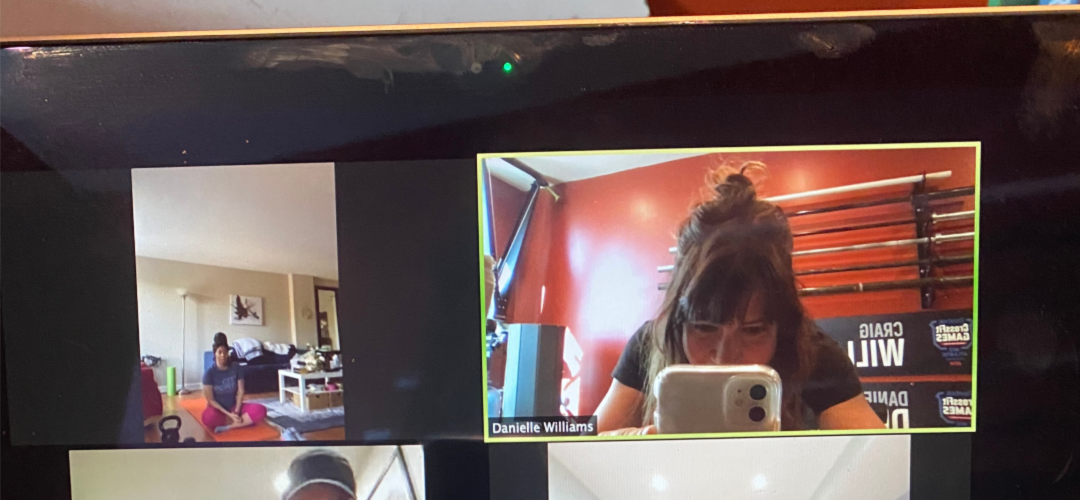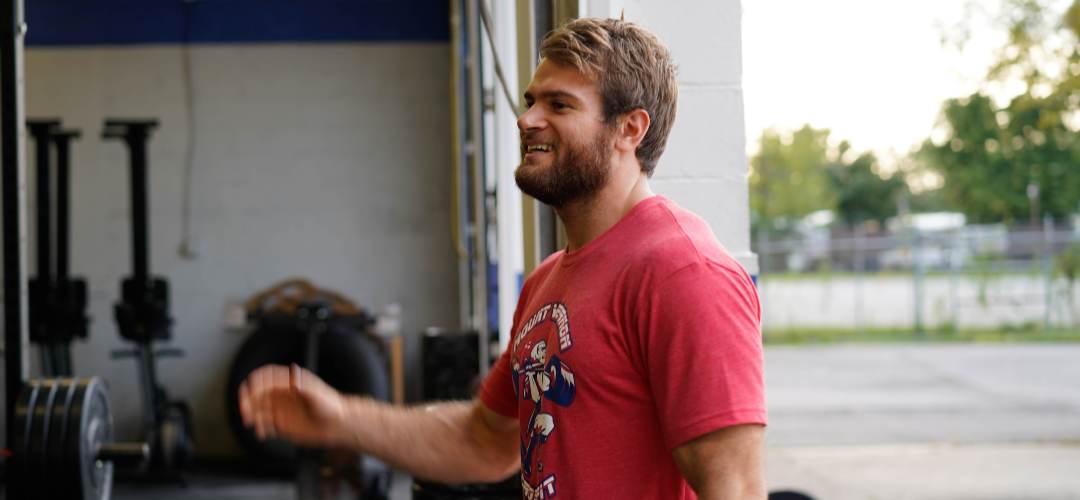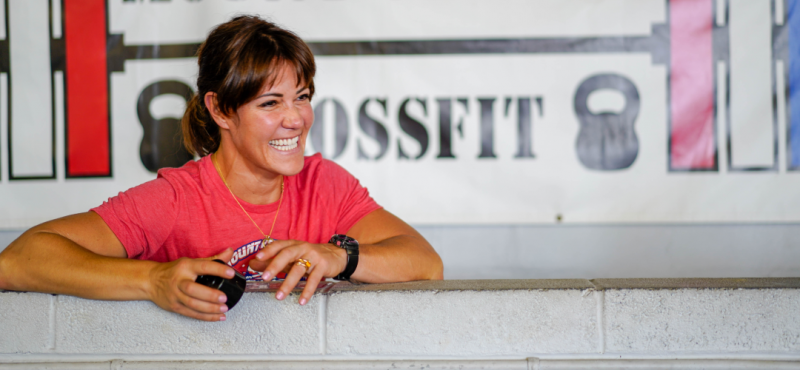On March 11, 2020, owners and coaches Danielle and Craig Williams of Mount Vernon CrossFit in Alexandria, Virginia, had no inkling that their gym would be shuttering its iconic, garage-bay doors due to the COVID-19 pandemic. Three days later, it was a done deal. And what was originally supposed to be a two-week hiatus has now stretched into several more weeks – with no end in sight. Thanks to the couple’s quick decision-making, personal outreach, and a bevy of tech tools, however, they’ve been able to open their doors virtually to keep members fit and their business sustainable. Here’s how they did it.
Three Phases of Transitioning Online
“My immediate reaction was to shift our program design to make it more conducive to working out at home,” says Danielle. The couple quickly took advantage of high-speed broadband available in their location to move online. Thanks to that connection, streaming video workouts could be a reasonable alternative to working out in person.
One challenge they did face moving online is that CrossFit is a community-based workout that’s done as a group. “It’s a bonding experience,” Danielle continued, “Compared to other fitness programs, it’s about forming relationships.” This was particularly the case at Mount Vernon, a tight community of about 100 members which even has a basketball net and BBQ grills for post-workout socializing.
Taking advantage of their swift decision to close – several days before the governor’s executive order – the Williams established an entirely new online gym experience in short order. This consisted of three phases, all of which occurred in the space of several days.
- Phase One consisted of harnessing infrastructure already in place: both their high-speed broadband connection and SugarWOD, an app used across the CrossFit world to provide workout programming and tracking. Having SugarWOD in place meant that the Williams could immediately begin posting at-home workouts, along with important community messages, in a context familiar to members.
- Phase Two made use of video platforms. Mount Vernon’s private Facebook group allowed the coaches to host live online classes, but the Williams soon realized that Facebook Live videos were too one-way. A day later, the Williams set up a Zoom account and began hosting interactive online classes several times a day. “Zoom has allowed us to have that connection and camaraderie,” says Danielle. “The coaches can still see you and provide visual cues and feedback, as well as creating a motivating environment with accountability.”
- Phase Three entailed bringing together all of their communication platforms: SugarWOD, Facebook, Zoom, Constant Contact (an email app), and MindBody (a registration app). The various technologies allowed the coaches to reach people via their preferred channels, solicit feedback on what was/wasn’t working, and offer video previews of the next day’s workout.
And with all the technology, apps, and streams working together, the internet has held up. Mount Vernon’s connections have been both speedy and reliable, allowing their members to have a seamless experience across different technologies. That backbone, through every phase, has allowed some normalcy to remain in members’ day-to-day.
“We realized that this closure was going to be long-term,” says Craig, “And we wanted to give members the opportunity to continue their fitness during the pandemic.”

Connections Don’t Happen Alone
Despite harvesting a rich infrastructure and variety of platforms, however, one thing the Williams learned is that connectivity does not just happen on its own: it requires outreach, training, and ongoing communication.
“One of the things we did right away was make sure as many members as possible were able to get on Zoom,” says Craig. “It’s easy to get into a funk and not want to work out, because you’re out of your rhythm and your schedule is all messed up. So encouraging people and helping them onto the platform was very important. We’ve had members tell us these Zoom classes are what’s keeping them going.”
Getting members onto Zoom did not happen by magic. During the first week, Danielle personally reached out to every single member via text, phone, or messenger, asking how they were doing and helping them troubleshoot barriers to getting online.
Recognizing that many members did not own their own weight sets, the gym even allowed members to borrow equipment for the duration of the quarantine.
“On the last day we were open, we let members grab kettlebells and dumbbells,” says Danielle. “It’s on the honor system. I even delivered weights and equipment to a few people who had not made it in.”

Going Back/Not Going Back
Although the technological experiment has been vital to keeping their business afloat, Craig doesn’t see online CrossFit becoming a permanent replacement. “You really can’t replace that experience at the gym where I can watch you – in person – and make personal suggestions,” he notes. “And at the gym we have more equipment, better facilities. Most people don’t have anything like this at home.”
What the experience has provoked is a search for diversification into other streams of revenue, such as small groups and private training – where high-speed broadband infrastructure and connected technology will continue to play a role. “The pandemic is getting the ball rolling faster than anticipated,” says Danielle. “This was something that we were developing, but now working harder to deliver sooner!”
With nine out of 10 Americans staying at home, our nation’s broadband networks are being put to the test. Thankfully, the infrastructure is up to the challenge. For more information on America’s broadband networks and how to stay connected during the pandemic, visit our COVID-19 Resources page.
